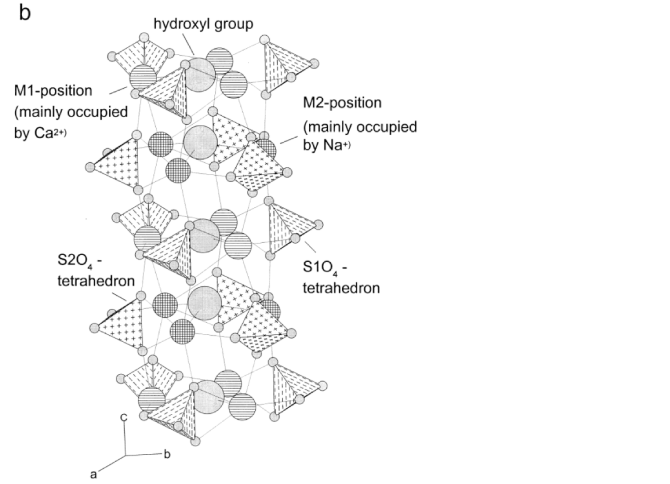"Characterization of the stuffed framework structures BaAlGaO4 and BaFeGaO4"
- Authors
V. Kahlenberg, J.B. Parise, Y. Lee, A. Tripathi
- Journal
Zeitschrift fur Kristallographie
Vol.217, No.6, pp.249-255, 2002.05 - DOI
Abstract
he crystal structures of the compounds BaMGaO4 (M = Al, Fe) have been investigated using conventional single-crystal X-ray diffraction data for M = Fe and with synchrotron radiation data for M = Al. BaAlGaO4 (space group P6322, a = 5.2788(4) Å and c = 8.7835(7) Å, V = 211.97(4) Å3, Z = 2, Dcalc. = 4.67 g cm–3, wR2 = 0.089 for 242 independent reflections with I > 2σ(I)) is isostructural with BaAl2O4-I. Main building units are layers of six-membered rings of (Al,Ga)O4-tetrahedra perpendicular to [001]. The sequence of directedness of the tetrahedral apices in all single six membered rings (S6R) is UDUDUD (U: up, D: down). Stacking of layers parallel to c results in a three-dimensional framework containing tunnels, where the Ba atoms are located. They are coordinated by nine oxygen ligands in form of distorted tricapped trigonal antiprisms. BaFeGaO4 also belongs to the hexagonal crystal system (space group P63, a = 10.8377(6) Å and c = 8.6865(6) Å, V = 883.59(9) Å3, Z = 8, Dcalc. = 4.92 g cm–3, wR2 = 0.099 for 1042 independent observed reflections). The crystal showed twinning by merohedry which was accounted for in the refinement calculations. Within a single tetrahedral layer of the framework structure two different types of ditrigonal-shaped rings are distinguishable: one fourth of the rings have an UDUDUD topology, whereas the sequence of the remaining rings is UUUDDD. The Fe3+- and Ga3+-cations show an ordered distribution among the four symmetrically independent T-sites: two positions contain either Fe or Ga, whereas on the remaining two sites there is a definite preference for one of the two cation species. The Ba atoms in the cavities of the framework are coordinated by eight to nine oxygen neighbors. The observed twinning in BaFeGaO4 can be attributed to the existence of pseudo twofold axis within the tetrahedral layers, running parallel [100] and the corresponding symmetrically equivalent directions.












